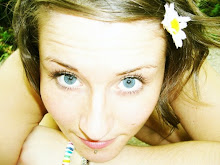The "Happenings" first started as tightly scripted events, in which the audience and performers followed queues to experience the art. One such work, titled "Eighteen Happenings in Six Parts", involved an audience moving together to experience elements such as a band playing toy instruments, a woman squeezing an orange, and painters painting. His work evolved, and became less scripted and incorporated more everyday activities. Kaprow's most famous happenings began around 1961 to 1962, when he would take students or friends out to a specific site to perform a small action. In his own words, "And the work itself, the action, the kind of participation, was as remote from anything artistic as the site was." He rarely recorded his Happenings, and they usually happened once Kaprow's work attempts to integrate art and life. Through Happenings, the separation between life and art, and artist and audience becomes blurred. He has published extensively and was Professor Emeritus in the Visual ArtsDepartment of the University of California, San Diego. Kaprow is also known for the idea of "un-art", found in his essays "Art Which Can't Be Art" and "The Education of the Un-Artist."
26 February 2009
Research - Allan Kaprow
Allan Kaprow (August 23, 1927 – April 5, 2006) was an American painter, assemblagist and a pioneer in establishing the concepts of performance art. He helped to develop the "Environment" and "Happening" in the late 1950s and 1960s, as well as their theory. His Happenings - some 200 of them - evolved over the years. Eventually Kaprow shifted his practice into what he called "Activities", intimately-scaled pieces for one or several players and devoted to the examination of everyday behaviors and habits in a way nearly indistinguishable from ordinary life. Fluxus, Performance art, and Installation art was, in turn, influenced by his work.
Subscribe to:
Post Comments (Atom)

No comments:
Post a Comment